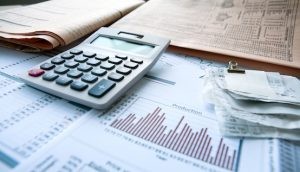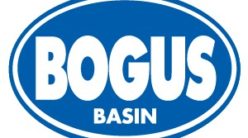By Sarah Glenn/For the Journal
POCATELLO – Four times each year, accounting students across America pull a chair up to a testing computer and sit for the Certified Public Accountancy (CPA) exam. They instinctively know that about half of the people around them will not pass the exam. In the fourth quarter of 2016, the cumulative pass rate for all four sections of the exam was just more than 46 percent; the annual 2015 average was 55 percent.
However, those odds change if you are from Idaho State University.
The College of Business’ Master’s of Accountancy (MAcc) program has an 88 percent average CPA exam pass rate (averaged over the course of three years).
“That puts us on par with the top accounting programs in the country,” said Daniel Ames, ISU’s Interim Associate Dean and Chair in the College of Business’ Department of Accounting.
For perspective, U.S. News and World Report ranks the University of Texas-Austin as the best accountancy program in the nation. In 2015, their overall CPA exam pass rate was 77 percent among both graduate and undergraduate students.
Ames says that some of ISU’s success might be because of small class size and detailed attention from teachers. About 40 students are pursuing their masters in accounting at ISU.
“We have instructors who know these students and who are willing to put in time outside of class to see them succeed,” Ames said. “I have worked at other universities and seen how other places operate — having faculty who are willing to spend this much time out of class is a-typical.”
Idaho State University employs 10 full-time accounting faculty. Masters students in accountancy spend almost all of their class time under the eye of these people.
Those who take the CPA exam in Idaho generally have to be learning at a graduate level. Anyone who wants to sit for the exam needs to have 150 university credits to their name. The typical undergraduate degree requires in the neighborhood of 120 credits.
Another factor that Ames says contributes to the high pass rate is the design of the master’s program itself. Generally, the master’s program takes 12 months to complete two full semesters. Students take two classes in the first half of the semester (lasting eight weeks) and two more in the second half of that semester (lasting another eight weeks). That model continues during the second half of their program. What is taught reflects the four sections of the CPA exam that the students will take piecemeal throughout the year.
 While it might sound like ISU is teaching to the test, Ames believes their method is more than that.
While it might sound like ISU is teaching to the test, Ames believes their method is more than that.
“We are preparing students to be successful professionally so we want so much more than that (for them to simply pass an exam),” Ames said. “We want them to be successful in their careers and have outstanding skills that represent ISU in the long-term the way that we would like.”
According to Ames, about three-quarters of ISU’s students choose to take the CPA exam. Statistically, the students who pass will likely have promising careers ahead of them.
The U.S. Bureau of Labor Statistics (BLS) expects that employment of accountants and auditors will grow 11 percent through 2018 — faster than the average occupation.
The BLS adds that between 2014 and 2024, there will be 142,400 new jobs for CPAs. However, the American Institute of CPAs (AICPA) says that the 11 percent increase within the field won’t make a dent in the industry’s needs when you take turnover into account.
The AICPA expects more than 75 percent of today’s CPAs will retire within the next 15 years, eligible as early as 2020. That’s one of the highest percentages of any subgroup within any other field over the same timeframe.

Map by the Bureau of Labor Statistics.
Reflecting the national need for accountants, pay is expected to go up in 2017. Bureau of Labor Statistics puts the median wage for accountants and auditors (with or without their CPA license) at $65,190. In southern Idaho, the average annual wage was $79,130, the BLS said.
The Robert Half 2017 Salary Guide projects that starting salaries for accountants will increase from 3 percent to 4.3 percent in 2017, depending on the position. The guide was published in August.
The 2017 Salary Guide published by Accounting Principals, which focuses on salaries in general rather than starting salaries, predicts continued escalation in pay. The Accounting Principals guide forecast a 2.8 percent increase in pay for 2017, up from previous predictions of a 2.4 percent rise for 2016 and a 1.2 percent rise for 2015.

Map by the Bureau of Labor Statistics.
Meanwhile, management accountants from across the world expect their salaries to increase by an average of 6 percent in the coming year, up from 5 percent in 2015, according to a Chartered Institute of Management Accountants survey.
“Given the current status of the profession it is definitely advantageous to have a CPA,” Ames said.
According to the National Association of State Boards of Accountancy (NASBA), the jurisdictions with the highest CPA exam pass rate during 2015 were: Utah (65.4 percent), Wisconsin (60.5 percent) and Missouri (58.5 percent). Performance metrics also indicate 93,724 candidates took the Uniform CPA Examination in 2015 (of which 42,439 were new candidates) with 26,110 candidates passing their fourth section of the Uniform CPA Examination.
The University Edition of the NASBA report adds that during 2015, the universities with the most candidates were: Baruch College CUNY (805), University of Illinois – Urbana Champaign (657) and the University of Southern California (478).





